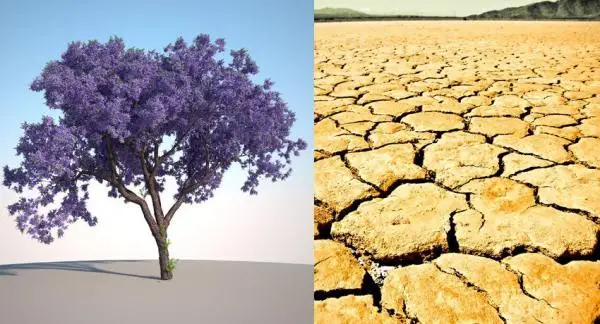It is an ornamental tree, large and leafy, really striking, originally from China and baptized with the name of Kiri (paulownia tomentose or paulownia imperial), although it is also known as the Empress tree. But these characteristics are not the ones that have given it special relevance at the environmental level.
So what is special about this tree family of paulowniaceae belonging to the family of paulowniaceae? Its distinctive feature, which makes it unique, is related to its efficiency when it comes to photosynthesis.
Environmental advantages of the Kiri
In addition to this surprising productivity as a carbon sink and oxygen emitter, despite not belonging to arid areas, it is a very resistant tree. Both diseases or pests and lack of resources, including poor soil, droughts, or pollution.
The main reason it is less affected by diseases, among other reasons, is the small proportion of oils and resins it contains. Likewise, it adapts to soils that intensive agriculture has impoverished and polluted, at the same time that it is revealed as a solution to dispose of spaces contaminated by hydrocarbons or other chemicals as a result of environmental disasters.
With the double advantage of converting environmentally unviable spaces into green areas and recovering their properties in a certain way thanks to the contribution of oxygen and nitrogen. Like any tree, they prevent erosion, especially in their case by having powerful roots. On the other hand, its deep roots also help to regenerate the soil, since a microhabitat is created around it in which the microorganisms that contribute wealth to the earth proliferate.
Within this aspect, it also especially improves soil permeability, as well as water retention. Let us not forget that the potential for water retention is an important factor in the hydrological cycle, without forgetting its role in reducing runoff.
Its growth is another aspect worth highlighting. Of all the known tree species, it holds the record for rapid growth. In less than a year it can reach 6 meters in height and grows an average of 2 centimeters per day and in just over five years it will approach its maximum size.
This growth, of course, has not gone unnoticed by the industry. In fact, Kiri has a myriad of industrial applications, taking into account in addition to the properties of its wood, which is characterized by being light, uniform, and very productive. It is not bamboo, an ecological alternative to wood, but within these, it really does make a difference.
Fire, an enemy of the forests, is also quite at bay with this species. They are not fire retardant, a feature not yet known in the trees, but it shows a huge fire resistance and can survive at temperatures up to 435 degrees Celsius.

A tree to save the planet
As a successful project, it is worth mentioning the program The Kiri Tree Revolution, which will soon celebrate a decade of planting this tree in Texas, United States, in order to reach the goal of reaching one million plantations. Argentina or Mexico, among other countries, are also interested in planting it, with different projects underway or in the making that has proven the suitability of the climate for the species to thrive.
Apart from success stories, beyond scientific explanations about these ideal characteristics for a context like the current one, -where climate change and deforestation are doing their thing-, it matters simply that it has them. That is, the sum of all of them in the same tree is what makes Kiri a great ally to save the planet and also us.
They are the ones that give it a great value to improve the environment and have an important resource from an economic point of view. Although, of course, tree lovers do not look favorably on their felling. But this is another story, more supportive and beautiful, but also with a greater degree of utopia.

Conclusions
It ie I consume more carbon dioxide (CO2), main gas greenhouse, and also produces more oxygen when compared with other trees. A capacity that explains its huge leaves and its peculiar metabolic characteristics.
In figures, it significantly increases the productivity of other trees, being able to multiply it by ten. Specifically, each day a single Paulownia tree captures about 21.7 kilograms of CO2 to convert it into almost 6 kilograms of oxygen.
Its high capacity to oxygenate and refresh the environment adds to its beautiful appearance to make it an eco-friendly option for the gardens of polluted cities. Not surprisingly, it is a majestic tree, with great potential for ornamental gardening that, in turn, provides a pleasant shade, along with many other advantages that are mentioned below.
Similarly, the Kiri plantations are an interesting solution for reforestation. In this case, the necessary space is not always respected so that they can develop their glasses as much as necessary. A circumstance that also occurs when they are planted for economic purposes, specifically to obtain wood, taking advantage of its rapid growth. For its part, when it has to compete with taller trees that provide shade, it has many difficulties to develop.


